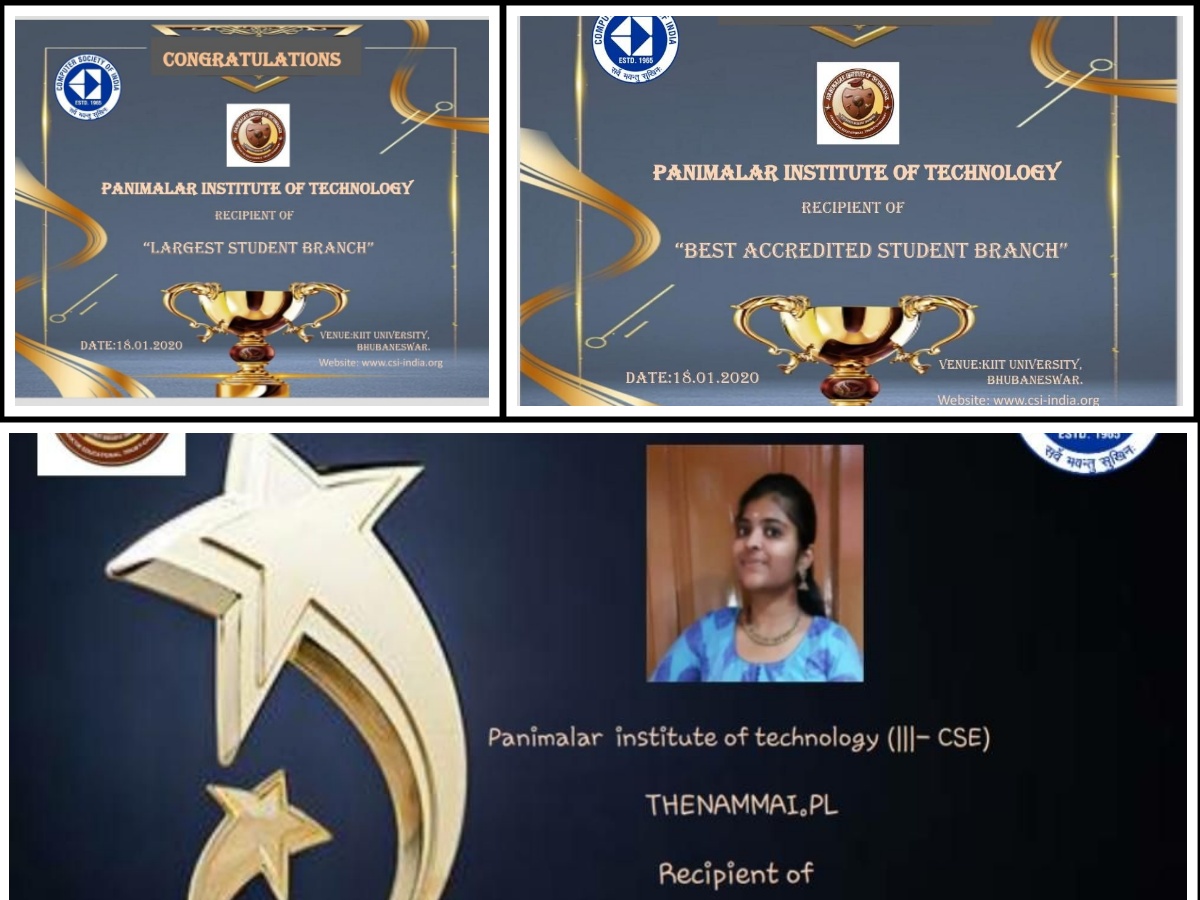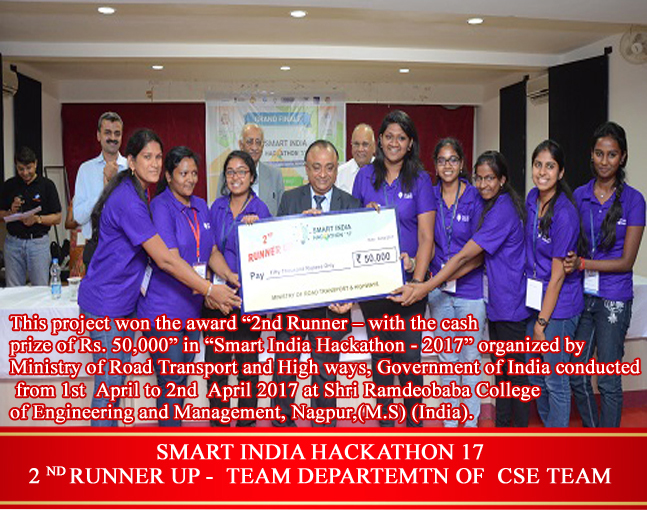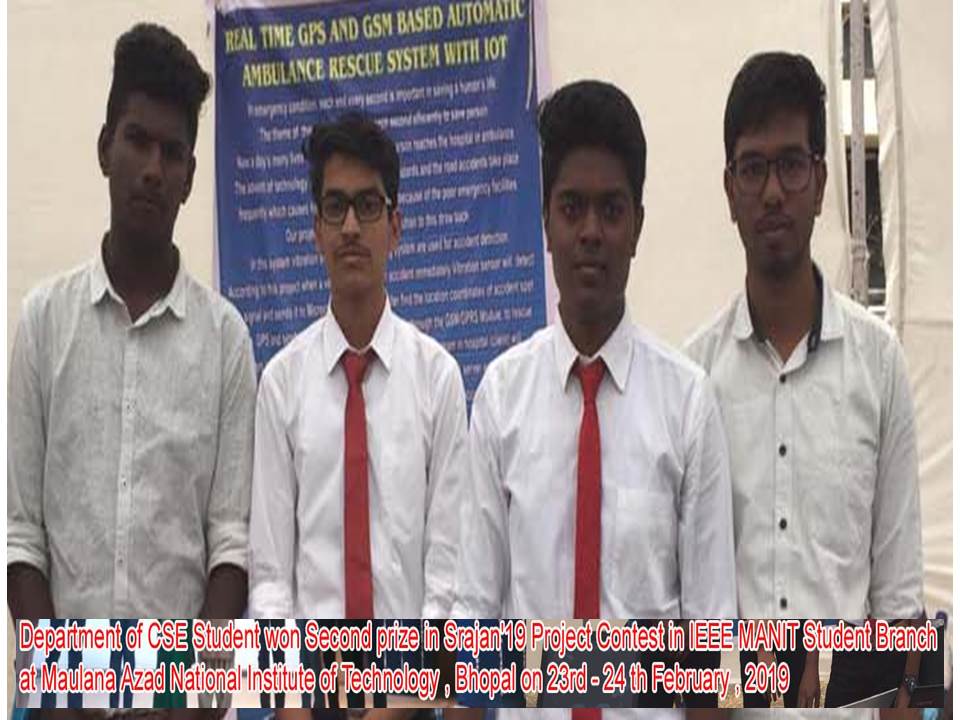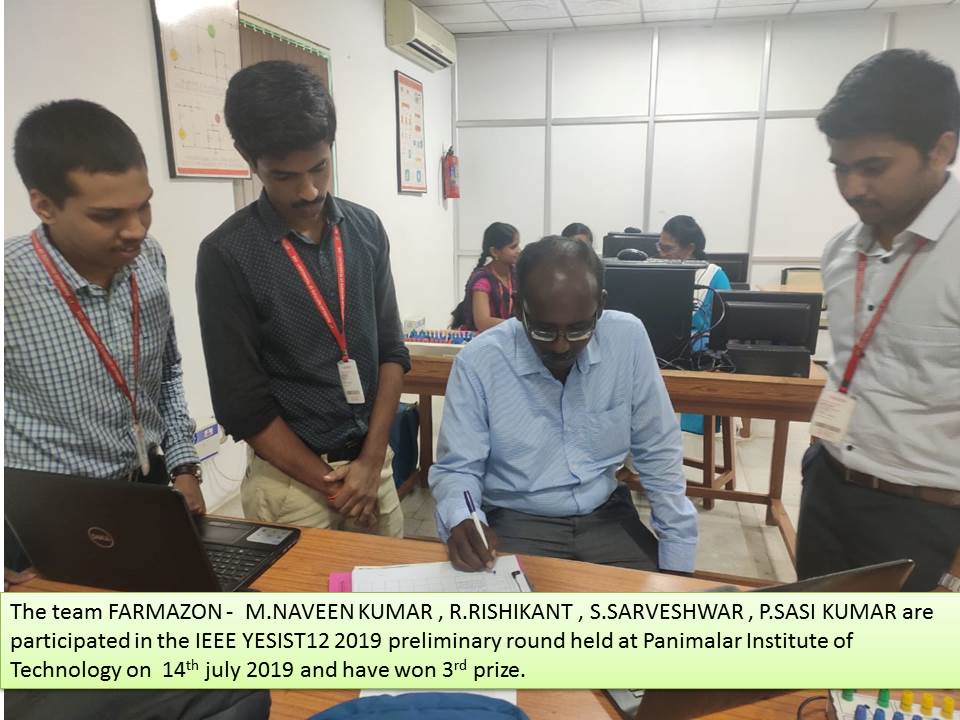
Innovative Teaching Methods
Cross Word
Flash Cards
Class Polling
MCQ
Mind Map
Think-Pair-Share
Role Play
Video Lectures
Product Development
Consultancy Projects
Patent
Copyright
Student Publications
Student Awards
Innovative Teaching Methods
II YEAR – III SEMESTER
| Subject | Staff Name | Innovative Methods |
| CS8391 – Data Structures | Mr. K. Sathyamoorthy | View PDF CrossWord – Model – Animation |
| CS8392 – Object Oriented Programming | Mrs.S. Panimalar |
View PDF Class Poll View PDF Think – Pair – Share (TPS) View PDF Random Name Picker |
| CS8351- Digital Principles And System Design | Mr.S.Kaviarasan Mrs.E.Archana |
View PDF Multiple Choice Questions View PDF Video |
III YEAR – V SEMESTER
| Subject | Staff Name | Innovative Methods |
| CS8591- Computer Networks | Dr.S. Hemalatha Mr.K. Gopinath |
View PDF Class Polling View PDF Think – Pair – Share (TPS) View PDF Mind Map |
| CS8592 – Object Oriented Analysis And Design | Mrs.A. Jerrin Simla Mrs.M. Abirami |
Think-Pair-Share View PDF Collaborative Learning Class Polling |
| CS8501 – Theory Of Computation | Mrs.M. Therasa |
Collaborative Learning View PDF Stu. Team Achievement Learning By Doing |
| OMD553 – Tele Health | Mrs.K. Hema Priya |
View PDF Group-UP Group-Down View PDF Animation View PDF Technical Connection |
IV YEAR – VII SEMESTER
| Subject | Staff Name | Innovative Methods |
| CS6701- Cryptography And Network Security | Dr.V. Subedha Mrs.S. Hemamalini |
View PDF Respond, React And Reply View PDF Tit-For-Tat View PDF Role Play |
| CS6703 – Grid And Cloud Computing | Mrs.J. Deepa Mr.T.A.Mohana Prakash |
View PDF Flash Cards View PDF Warm-Up-Class View PDF Class Polling |
| CS6004 – Cyber Forensics | Dr.T. Kalaichelvi | View PDF Reflection View PDF Class Polling View PDF Flash Cards |
| CS6007 – Information Retrieval | Dr.S. Venkata Lakshmi | View PDF Flash Cards View PDF Mind Map View PDF Tech. Connection Game |
Innovative Teaching Methods – Cross Word
Innovative Teaching Methods – Flash Cards
Innovative Teaching Methods – Class Polling
Innovative Teaching Methods – MCQ
Innovative Teaching Methods – Mind Map
Innovative Teaching Methods – Think – Pair – Share
Innovative Teaching Methods – Role Play
Video Lectures
Computer Architecture
Booth Algorithm
Booth’s multiplication algorithm is a multiplication algorithm that multiplies two signed binary numbers in two’s complement notation. The algorithm was invented by Andrew Donald Booth in 1950 while doing research on crystallography at Birkbeck College in Bloomsbury, London. Booth used desk calculators that were faster at shifting than adding and created the algorithm to increase their speed. Booth’s algorithm is of interest in the study of computer architecture.
Artificial Intelligence
Expert System
Artificial intelligence (AI) is intelligence exhibited by machines. In computer science, the field of AI research defines itself as the study of “intelligent agents”: any device that perceives its environment and takes actions that maximize its chance of success at some goal.Colloquially, the term “artificial intelligence” is applied when a machine mimics “cognitive” functions that humans associate with other human minds, such as “learning” and “problem solving”.
In artificial intelligence, an expert system is a computer system that emulates the decision-making ability of a human expert. Expert systems are designed to solve complex problems by reasoning about knowledge, represented mainly as if–then rules rather than through conventional procedural code.
Operating System
Paging Concept
In computer operating systems, paging is a memory management scheme by which a computer stores and retrieves data from secondary storage for use in main memory. In this scheme, the operating system retrieves data from secondary storage in same-size blocks called pages.
Paging is an important part of virtual memory implementations in modern operating systems, using secondary storage to let programs exceed the size of available physical memory.For simplicity, main memory is called “RAM” (an acronym of “random-access memory”) and secondary storage is called “disk” (a shorthand for “hard disk drive”), but the concepts do not depend on whether these terms apply literally to a specific computer system.
Multi Core Architecture
Multi Core Architecture
Multicore refers to an architecture in which a single physical processor incorporates the core logic of more than one processor. A single integrated circuit is used to package or hold these processors. These single integrated circuits are known as a die.
A multi-core processor is a single computing component with two or more independent actual processing units (called “cores”), which are units that read and execute program instructions.[1] The instructions are ordinary CPU instructions (such as add, move data, and branch), but the single processor can run multiple instructions on separate cores at the same time, increasing overall speed for programs amenable to parallel computing.[2] Manufacturers typically integrate the cores onto a single integrated circuit die (known as a chip multiprocessor or CMP), or onto multiple dies in a single chip package.
Computer Network
OSI Model
The Open Systems Interconnection model (OSI model) is a conceptual model that characterizes and standardizes the communication functions of a telecommunication or computing system without regard to their underlying internal structure and technology. Its goal is the interoperability of diverse communication systems with standard protocols. The model partitions a communication system into abstraction layers. The original version of the model defined seven layers.
A layer serves the layer above it and is served by the layer below it. For example, a layer that provides error-free communications across a network provides the path needed by applications above it, while it calls the next lower layer to send and receive packets that comprise the contents of that path. Two instances at the same layer are visualized as connected by a horizontal connection in that layer.
Product Development
Consultancy Projects
Patent
Copyright
Student Publications
ACADEMIC YEAR 2019-2020
ACADEMIC YEAR 2018-2019
Journal Publication 2018 – 2019
Conference Publication 2018 – 2019
ACADEMIC YEAR 2017-2018
Journal Publication 2017 – 2018
Conference Publication 2017 – 2018
Student Award

ACADEMIC YEAR 19-20




